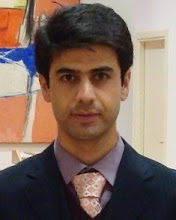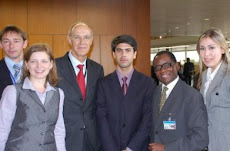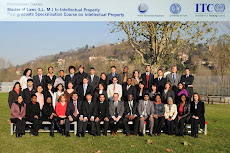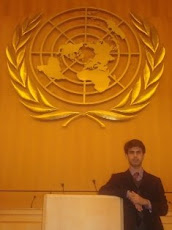From 1931 to 2008, "Patent and Trademark Registration Act" was applicable. According to this Act, industrial designs and geographical indications were not registrable . This Act remained in force for about 77 years without any changes till October 2007. in October 2007 new Act named “Patent, Industrial Design and Trademark Registration Act” enacted by Parliament and its Implementary Regulations have recently been approved by the Head of the judicial system of Iran. According to the new Act, Industrial designs for the first time in Iranian regulatory period among others, are protectable. this law is more compatible with international treaties including TRIPs(Trade-Related Aspects of Intellectual Property rights).
The main features of this Act inter alia, are as;

 About Patents, the system of registration of patents is First-to-file; there is a grace period of 6 month for filing a patent application after a disclosure and publicising the invention; compulsory license is provided; duration of protection for patent is 20 years counted from filing date of the application(in order to maintenance of validity of patent certificate or application, every year as from filing date of application maintenance fee as provided for in the Act must be paid to Office for Industrial Property. If the payment is not made in due time, the application is deemed abandoned or the certificate is deemed invalid(of course there is a grace period of 6 month by additional payment)).
About Patents, the system of registration of patents is First-to-file; there is a grace period of 6 month for filing a patent application after a disclosure and publicising the invention; compulsory license is provided; duration of protection for patent is 20 years counted from filing date of the application(in order to maintenance of validity of patent certificate or application, every year as from filing date of application maintenance fee as provided for in the Act must be paid to Office for Industrial Property. If the payment is not made in due time, the application is deemed abandoned or the certificate is deemed invalid(of course there is a grace period of 6 month by additional payment)).For registering industrial designs the Novelty and/or originality is of the criteria; grace period is the same as patent; duration of protection is initial period of 5 years with the possibility of renewal for two further periods of 5 years with the request of right holder.
In trademark area, any visual signs capable of distinguishing the goods or services of natural or legal persons from those of others can be registrable(audible signs(sound mark) such as music or vocal sounds and also fragrance signs(smell marks) are not protected); collective marks and trade names are protected; protection is obtained just by registration; duration of protection is 10 years with the possibility of renewal for further periods of 10 years;
For each patent, trademark and industrial designs assignment and license has been provided; in the case of committing an infringement of the rights granted, if it has been done knowingly and willingly the accused party might be considered to remedy(the damages of plaintiff) and criminal sanctions(either or both of fines(from 10,000,000Rials=1100$ U.S. to 50,000,000Rials) and imprisonment sentence(from 91 days to 6 month).
As far as Geographical Indications and Plant Varieties are concerned, there are special laws(Sui generis regime) for protection respectively named “ Act for Protection of geographical indications”(Appellation of Origin), enacted on January 2005 and “ Act for Registration of Plant Varieties, Control and Certification of Seeds and Seedlings” enacted in July, 2003.http://faolex.fao.org/docs/pdf/ira40210E.pdf .
Term of protection of plant varieties is at last 18 years.
It is noticeable here that according to Act for Protection of Geographical Indications(Article 3(a)) protection can be obtained even without registration, but it is necessary for Geographical Indication to be proved that in practice it attributes the origin of specific goods to particular area, place or country and in fact the quality, reputation and any other characteristics of the goods is essentially attributable to that specific geographical area. Any false and deceptive attribution to a specific geographical area may be considered as committing an infringement which results in legal remedy(paying for damages or loss in favor of plaintiff ) as well as criminal sanctions (either or both of monetary fines(from 10,000,000 Rials=1100$ U.S. to 50,000,000Rials in favour of government) and imprisonment sentence (from 91 days to 6 months) . The court may pass an interim order at the claimant's request.
2) Copyright And Related Right:
As far as Copyright is concerned, according to some special subject matters of copyright, there are three Laws for protection as:

1-“Act for the Protection of Authors, Composers and Artist Rights” enacted in January 1970.
2- “ Act for Translation and Reproduction of books, periodicals and audio works” enacted in 1973.
3- “ Act for protection of Software Producers” enacted in 2000.
According to Iranian copyright system, copyright holder is given two kinds of rights as Economic right and moral right. Unlike most common law countries in which by expiring economic right moral right is also expired, there is no any limitation to moral right in Iranian Act . In other word, protection of moral right is perpetual.
All Intellectual property right on the internet, are protected by the" Electronic Commerce Act "(2003).
3) Iran’s position in International level of Intellectual property:
International Treaties that Iran has acceded till now are as follows:
1) “Convention establishing the World Intellectual Property Organization”(WIPO Convention).(2002)
2) “Paris Convention for protection of Industrial property”.(acceded in 1959 and 1999(to the stockholm revision).
3) For Trademarks to “Madrid Agreement Concerning the International Registration of marks” and " the Protocol relating to the Madrid Agreement Concerning the International Registration of Marks" .(2003)
4) For Geographical indication to: 1) Lisbon Agreement for the Protection of Appellations of Origin and their International Registration.(2006). 2) Madrid Agreement for the Repression of False or Deceptive Indication of Source on Goods.(2004)
5) As far as Copyright and Related Rights are concerned Iran has not yet acceded to any International treaty.







